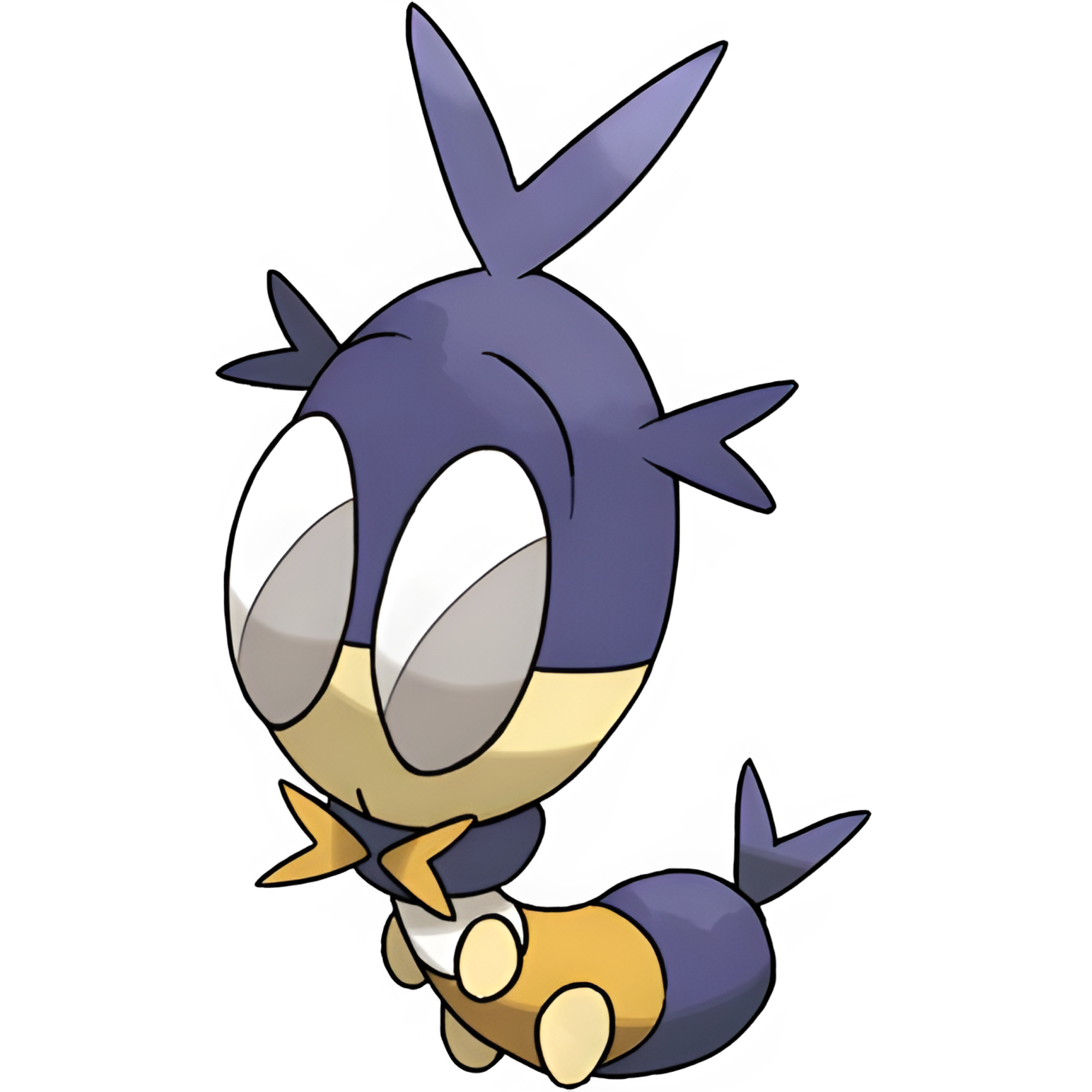Facts for Kids
Blipbug is a small, insect-like Pokémon known for its curiosity and ability to gather information.
Overview
Life Cycle
Behavior And Diet
Conservation Status
Cultural References
Habitat And Distribution
Physical Characteristics
Evolutionary Significance
Interaction With Other Species

Inside this Article
United Kingdom
Personality
Pollution
Caterpie
Orbeetle
Gardens
Dottler
Pokémon
Did you know?
🪲 Blipbug is a Bug-type Pokémon introduced in Generation VIII.
🌱 It evolves into Dottler starting at level 10.
🔍 Blipbug is known as the 'Bug Pokémon' in the Pokédex.
💡 It has the Ability Illuminate, which can help locate wild Pokémon.
🌌 Its body is said to be transparent, resembling a small bug.
⚡ Blipbug can be found in various grassy areas in the Galar region.
🦋 Its Pokédex entry describes it as having an inquisitive nature.
🍃 Blipbug is commonly spotted at night due to its nocturnal habits.
🌐 It is known for gathering information about the environment around it.
🪴 Blipbug has a maximum HP of 40 in Pokémon battles.
Introduction
It is known as the "Bug Pokémon" and has a unique design, resembling a little round insect with big eyes. Blipbug is exciting because it evolves into a stronger Pokémon called Dottler! It is a part of the Bug type family, which means it has some cool abilities. Blipbug is often found in the grass and fields, hiding among the plants. It loves to explore and seeks out new adventures with its trainer! 🎮
Life Cycle
It starts as an egg, which hatches into a small Blipbug. After some time and experience, Blipbug evolves into Dottler at level 10! Dottler is the next stage in its life, becoming stronger and learning new abilities. Eventually, Dottler evolves into Orbeetle, a powerful Pokémon! This process shows us how young Pokémon grow and change, just like us! 🌼
Behavior And Diet
It uses its big eyes to look around and explore its surroundings. Blipbug is mostly a herbivore, which means it eats plants! 🌿
It loves munching on leaves and grass, gathering energy to help it grow. Sometimes, it even helps out gardens by eating pesky insects! Blipbug is social and likes to hang out with other Bug-type Pokémon. They often communicate with each other using buzzing sounds, making a lovely symphony of nature! 🎶
Conservation Status
As a Bug-type Pokémon, it relies on healthy ecosystems like grasslands and gardens. If these areas are damaged by pollution or development, it can hurt Blipbug and many other creatures living there. Conservation efforts help protect these environments, ensuring that Blipbug can thrive with its friends. Always remember to treat nature kindly, just like our Pokémon pals! 🌍💚
Cultural References
It appeared first in "Pokémon Sword and Shield," which fans love. In the anime, Blipbug is cute and clumsy, making it a favorite for kids. There are toys and plushies featuring Blipbug, making it a sought-after collectible! 🤗
Its design and personality have captured the hearts of many Pokémon trainers worldwide, showcasing just how much fun exploring the Pokémon universe can be! 🌈
Habitat And Distribution
Physical Characteristics
Its body is mostly black with blue markings, and it has large, colorful eyes that help it see in the dark! Blipbug has tiny legs that allow it to scuttle around quickly. Its antennae are very sensitive, helping it detect movement around it. As a baby Pokémon, it may seem weak, but it’s really good at hiding! When it evolves into Dottler, it gains even more colorful patterns on its body and becomes a bit bigger too! 🦋
Evolutionary Significance
As a Bug-type Pokémon, it plays a crucial role in pollination, helping flowers bloom and grow. Its evolution to Dottler and finally to Orbeetle showcases the importance of growth in the Pokémon world. Each stage has unique strengths and abilities, contributing to battles and interactions. By understanding these evolutions, trainers learn about the journey of growth, making them better friends to their Pokémon! 🌟
Interaction With Other Species
It often shares its home with other Bug-types like Caterpie and Ladybug. These creatures help each other find food and stay safe. Blipbug is also a good snack for certain Pokémon! To protect itself, it tries to stay hidden in the grass. Sometimes Blipbug even helps flowers grow by pollinating them! These interactions show how all creatures in nature work together. 🐦

